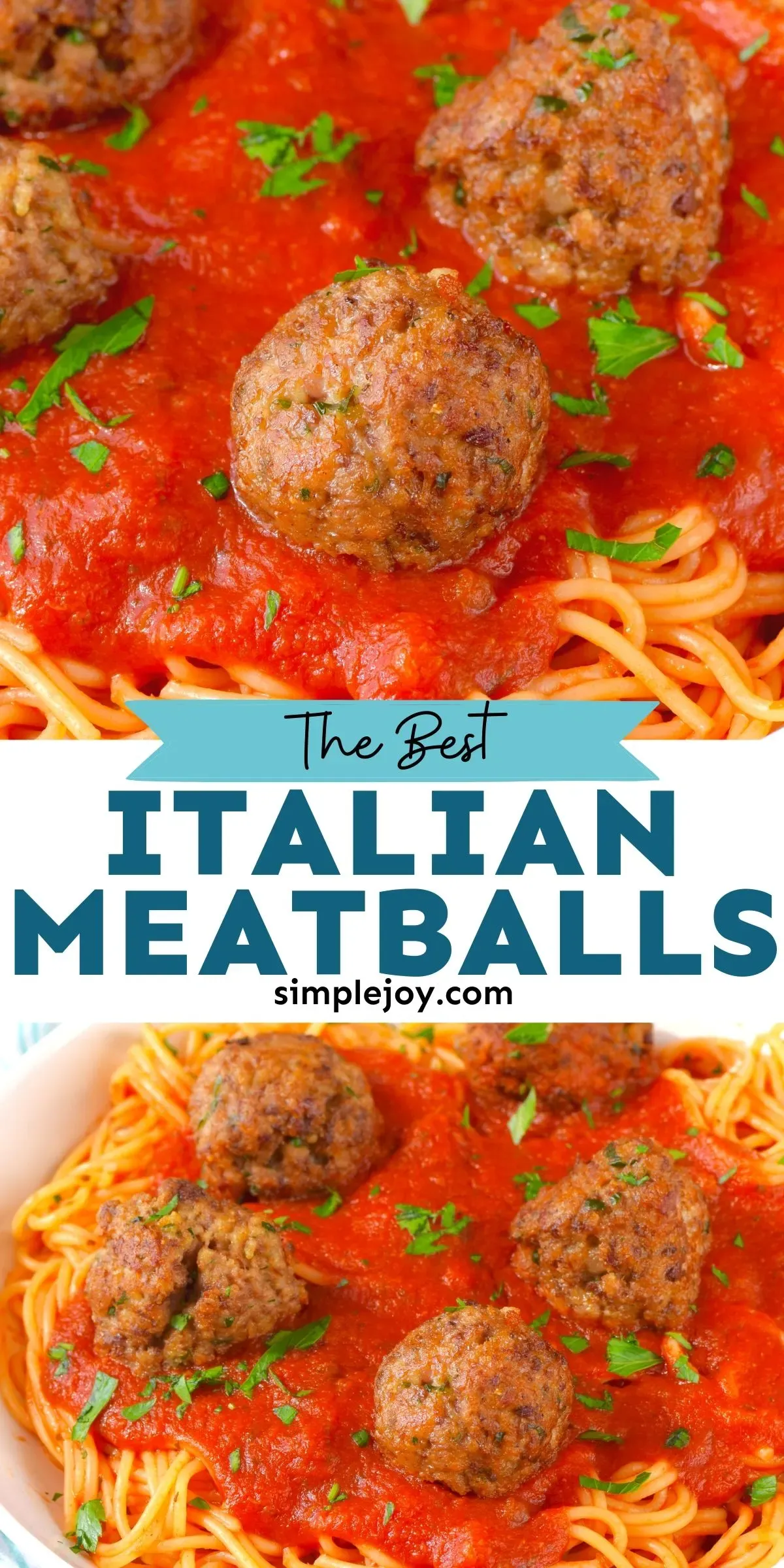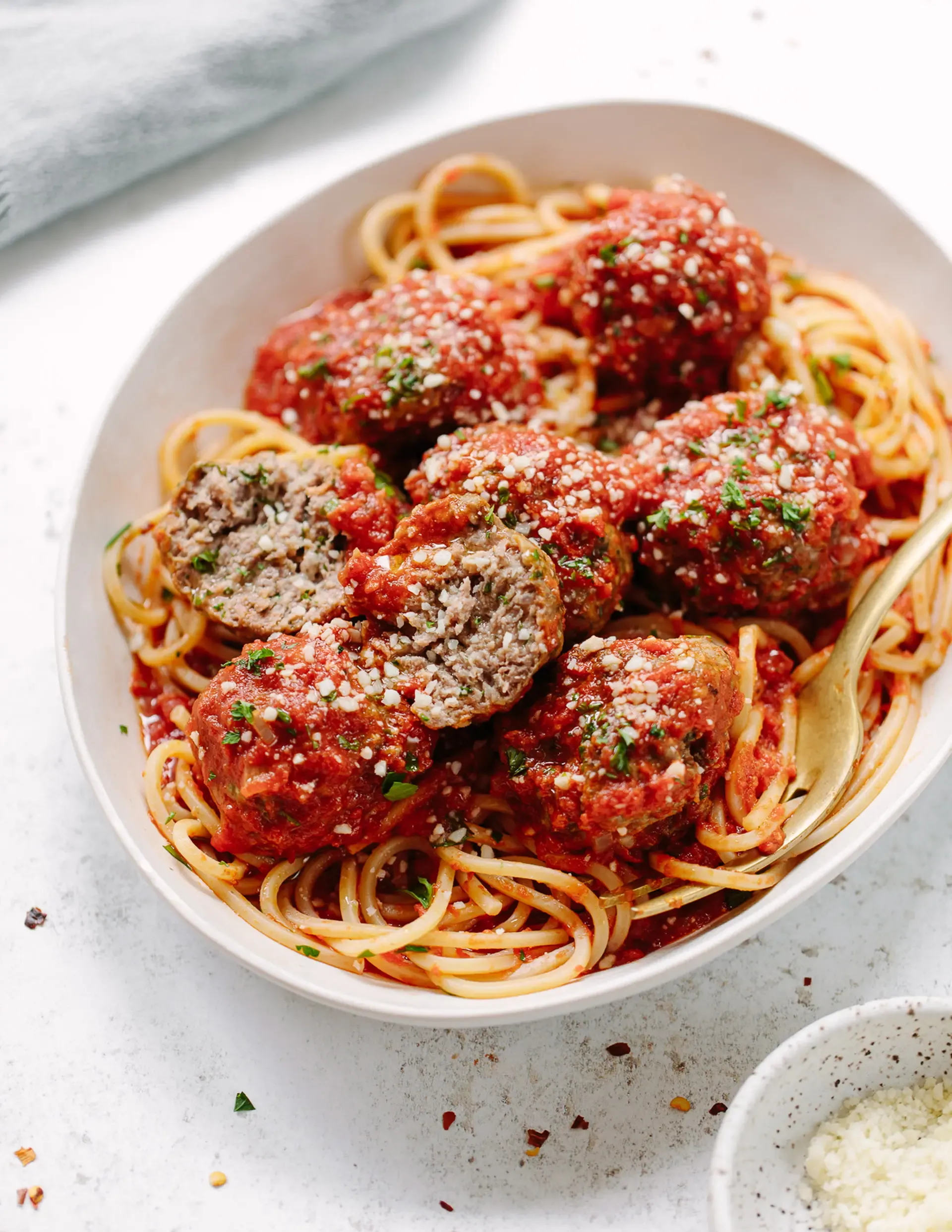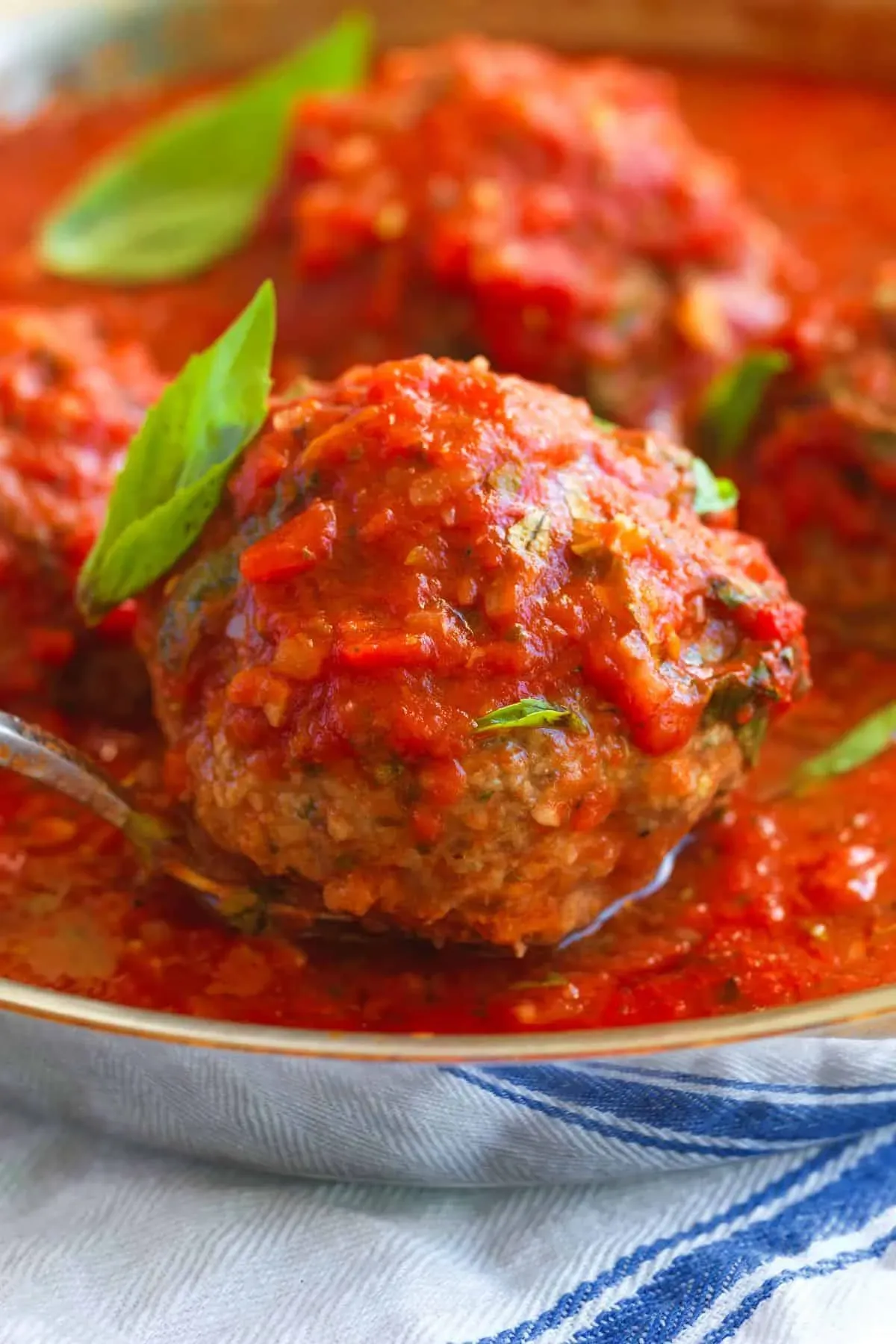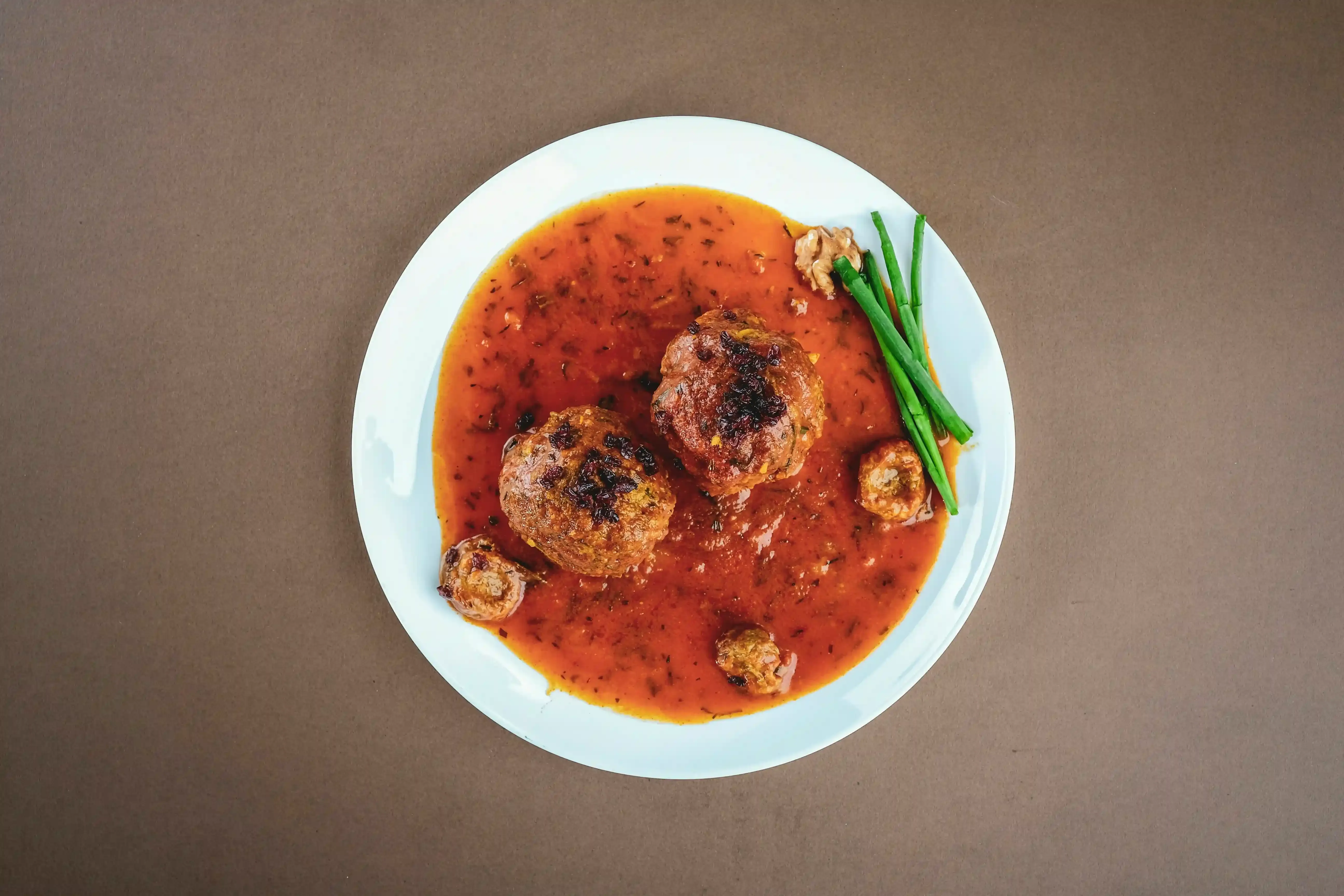Table of Contents
Let's be honest, most homemade meatballs? They're fine. Maybe a little dry, perhaps a bit bland, often just... meat lumps swimming in sauce. You've tried recipes claiming "best ever," only to end up with something decidedly average. It’s frustrating when you crave that perfect, tender, flavor-packed bite. You want a meatball that stands out, the kind people ask you about. The kind that feels like a genuine win in the kitchen.
Why This Is Your Next Award Winning Italian Meatball Recipe

Why This Is Your Next Award Winning Italian Meatball Recipe
Ditching the Dry, Disappointing Meatball
Let's face it, you've probably made meatballs that ended up drier than the Sahara. You followed a recipe, mixed the meat, rolled the balls, and simmered them. Yet, the result was dense, maybe a little tough, and definitely not the juicy, tender pillows you imagined. This isn't your fault. Many recipes miss the critical steps that ensure moisture stays *inside* the meatball, not leaching out into the sauce. This award winning italian meatball recipe tackles that head-on, focusing on technique and simple ingredients to prevent that common culinary tragedy.
We're not just throwing meat and breadcrumbs together and hoping for the best. We're building a structure within the meatball that locks in flavor and moisture. Think of it less like cooking and more like edible engineering. The goal is a meatball that yields slightly when you bite into it, not one that crumbles into dry dust.
The Secret Sauce (It's Not Just Tomato)
So, what makes *this* the award winning italian meatball recipe you've been searching for? It comes down to a few non-negotiable elements. First, the right blend of meats provides flavor depth and fat for juiciness. Second, the binder isn't just there to hold things together; it's crucial for texture and moisture retention. Forget using stale breadcrumbs straight from the box without soaking. That's a rookie mistake leading straight to dryness.
Third, and often overlooked, is the cooking method *before* they hit the sauce. Simply dropping raw meatballs into simmering liquid is a gamble. It can result in uneven cooking and a less developed exterior flavor. We build a little exterior integrity first, ensuring they hold their shape and contribute more than just bulk to your marinara.
As my grandmother used to say, usually while shaking her finger, "A sad meatball makes for a sad Sunday dinner." She wasn't wrong.
From Good to "Oh My God, What's In These?"
This isn't just about making *good* meatballs. It's about making meatballs that elicit a reaction. The kind where people pause mid-chew, close their eyes for a second, and then demand to know exactly how you made them. That's the "award winning" part. It's the look on someone's face when they realize this isn't just dinner; it's an experience.
Achieving this level of deliciousness isn't complicated, but it requires attention to detail. We'll walk you through the specific ratios, the exact techniques, and the small but mighty steps that elevate these from standard fare to truly memorable. Get ready to retire your old, disappointing meatball recipes forever. This award winning italian meatball recipe is about to become your new standard.
Gathering the Goods: Ingredients for Your Award Winning Italian Meatball Recipe

Gathering the Goods: Ingredients for Your Award Winning Italian Meatball Recipe
Choosing Your Meat Dream Team
Alright, let's talk meat. You can't make an award winning italian meatball recipe with just any old ground beef. A single type of meat often leads to a less complex flavor and can dry out faster. The secret here is a blend. We're looking for a mix that provides both flavor and enough fat to keep things moist during cooking. An 80/20 blend of ground beef is a solid starting point, but combining it with another meat takes it to the next level.
Pork is your best friend here. Ground pork brings sweetness and more fat, contributing significantly to tenderness. A classic Italian mix is beef and pork, usually in a 50/50 or 60/40 beef-to-pork ratio. Some folks even toss in a bit of veal for extra tenderness, though that's becoming less common. Whatever you choose, make sure it's freshly ground if possible. Pre-packaged stuff can be fine, but the fresher, the better the flavor and texture for your award winning italian meatball recipe.
The Binder: More Than Just Glue
The binder isn't just there to prevent your meatballs from falling apart in the sauce. It's crucial for moisture retention and creating that light, tender texture. Dry breadcrumbs added straight to meat are a recipe for hockey pucks. You need to soak them first. Milk is traditional, but water works too. Some chefs swear by soaking stale bread cubes (crusts removed) in milk and then squeezing out the excess. This creates a "panade," a paste that absorbs liquid and keeps the meatballs moist as they cook.
Eggs are also part of the binding crew, but don't go overboard. Too many eggs can make the meatballs rubbery. One or two eggs per pound of meat is usually sufficient. This combination of soaked bread (or breadcrumbs) and egg forms the internal structure that holds onto those precious meat juices. It's a small step, but skipping it means waving goodbye to that tender texture we're aiming for in this award winning italian meatball recipe.
- Classic Meat Blend: 50% Ground Beef (80/20), 50% Ground Pork
- Alternative Blend: 60% Ground Beef (80/20), 20% Ground Pork, 20% Ground Veal
- Binder Base: Stale bread (crusts removed) or plain dry breadcrumbs
- Soaking Liquid: Whole milk or water
- Binder Ratio Guideline: About 1/2 cup soaked bread/breadcrumbs and 1 egg per pound of meat mix
Flavor Makers and Savory Boosters
meat and binder are sorted. Now for the flavor. Garlic is non-negotiable. Freshly minced, please, not the jarred stuff unless you want your meatballs to taste vaguely of sadness. Onion or shallots, finely grated or minced and perhaps lightly sautéed to soften their bite, add another layer of aromatic depth. Don't skip the cheese – grated Pecorino Romano or Parmesan adds a salty, savory kick that's essential.
Fresh herbs are key. Parsley is a must, providing freshness. Some people add a pinch of dried oregano or basil, but go easy; dried herbs can be potent. Red pepper flakes offer a subtle warmth if you like, but they're optional. Salt and pepper are obvious, but taste and adjust. Remember, cheese adds salt, so factor that in. These simple additions transform ground meat into something truly special, cementing its status as an award winning italian meatball recipe.
StepbyStep: Crafting the Perfect Award Winning Italian Meatball Recipe

StepbyStep: Crafting the Perfect Award Winning Italian Meatball Recipe
Mixing Your Way to Meatball Mastery
Alright, you've got your ingredients prepped for this award winning italian meatball recipe. Now comes the crucial part: combining everything without turning it into a dense brick. Grab a large bowl. First, gently mix your soaked bread or breadcrumbs with the eggs and grated cheese. Let that sit for a minute to really come together. Then, add your finely minced garlic, onion (if using), parsley, salt, pepper, and any other seasonings. Give this wet mixture a gentle stir.
Now, add your meat blend. Here's where many people go wrong – they overmix. You are not kneading dough. You want to combine the ingredients just until everything is incorporated. Use your hands; it’s the best tool for feeling when it's just right. Fold and gently mix, lifting the mixture rather than pressing it down. Stop as soon as you don't see streaks of plain meat or binder. Overworking develops the protein, making the meatballs tough. We want tender, not chewy.
Forming and Searing for Flavor
With your mix ready, it's time to form the meatballs. Keep them roughly the same size for even cooking. A standard golf ball size is usually good, yielding about 1.5 to 2 inches in diameter. Don't pack them too tightly; a lighter touch helps keep them tender. Wetting your hands slightly can help prevent sticking. You should get around 14-18 meatballs from about 1.5 to 2 pounds of meat mix.
Before they hit the sauce, give them a quick sear. This adds a layer of flavor through browning and helps them hold their shape during the long simmer. Heat a few tablespoons of olive oil in a large skillet over medium-high heat. Brown the meatballs on all sides until they have a nice crust. They don't need to be cooked through, just nicely colored. This step is non-negotiable for that extra depth in your award winning italian meatball recipe.
- Mix wet ingredients first.
- Add meat last.
- Mix gently, do not overwork.
- Form meatballs evenly, don't pack tight.
- Sear meatballs on all sides before simmering.
Beyond the Basics: Tips for the Juiciest Meatballs

Beyond the Basics: Tips for the Juiciest Meatballs
Fat is Your Friend (Seriously)
Look, nobody wants a greasy meatball, but trying to make them with super lean meat is a fast track to dry, sad results. Fat renders as the meatballs cook, keeping them moist from the inside out. That's why the blend of beef and pork we talked about is crucial for this award winning italian meatball recipe. An 80/20 beef is good, but mixing it with pork that has a bit more fat pushes you toward peak juiciness. Don't drain off all the fat after searing either; some of that rendered goodness goes right into your sauce, adding flavor.
Temperature control is also a big deal. Searing should be hot enough to brown quickly but not so hot that you cook the interior completely. You're building a crust, not finishing the job. If you blast them with high heat for too long, you squeeze out the very juices you're trying to protect. Think of it as a gentle introduction to heat, not an interrogation.
The Simmering Secret Weapon
Once your beautifully seared meatballs hit the sauce, their journey to becoming truly tender and juicy is just beginning. Dropping them into a raging boil is a mistake. A gentle simmer is key. The low, consistent heat allows the meatballs to finish cooking through slowly, absorbing flavor from the sauce without seizing up and getting tough. This slow braise is where the magic happens, transforming the slightly firmed-up exterior into something incredibly tender.
How long should they simmer? At least 30 minutes, but honestly, an hour is better. Two hours? Even better. The longer they hang out in that warm, acidic tomato bath, the more tender they become. The acidity in the tomatoes actually helps break down the meat fibers. Just keep the heat low – you should see the occasional bubble, not a rolling boil. This patient simmering is a cornerstone of any truly award winning italian meatball recipe.
Ever wonder why restaurant meatballs often taste better? It's usually because they've been simmering all day. You can replicate that at home.
- Use meat with enough fat (80/20 beef, or better, a beef/pork mix).
- Don't over-sear; just brown the exterior.
- Simmer meatballs gently in sauce, don't boil.
- Simmer for at least 30-60 minutes, longer is often better.
- Taste your meat mixture before forming (cook a tiny piece!) to check seasoning.
Serving Up Success: How to Enjoy Your Award Winning Meatballs

Serving Up Success: How to Enjoy Your Award Winning Meatballs
Classic Pairings for Your Perfect Meatballs
You've put in the work, crafted these incredible, juicy meatballs following the blueprint for this award winning italian meatball recipe. Now comes the best part: eating them. The most classic way, of course, is piled high on a bed of spaghetti. Make sure your sauce is just as good as your meatballs – it should cling to them, not just be a watery afterthought. Toss the cooked pasta directly into the pot with the simmering meatballs and sauce, letting everything get coated and happy before serving. A sprinkle of fresh Parmesan or Pecorino Romano is non-negotiable. Don't forget a hunk of crusty bread for soaking up every last bit of that amazing sauce.
Another iconic way to enjoy these beauties is in a meatball sub. Toast a good quality roll, layer in the meatballs and sauce, and top with melted mozzarella or provolone cheese. A quick trip under the broiler creates that perfect gooey cheese pull. This isn't the time for wimpy bread; you need something sturdy enough to handle the weight and moisture without collapsing into a soggy mess. These meatballs are stars, treat them accordingly.
Beyond the Bowl: Creative Ways to Serve
While spaghetti and subs are champions, don't limit your award winning italian meatball recipe to just those options. They make a fantastic appetizer on their own – just simmer them in sauce and serve warm with toothpicks. Hosting a party? Keep a slow cooker of meatballs and sauce warm for easy self-serving. They're always the first thing to disappear.
Consider serving them over creamy polenta or mashed potatoes for a comforting twist. Slice them up and use them as a pizza topping (add them *after* the pizza is mostly cooked so they don't dry out). They can even be folded into a hearty minestrone soup or used in a baked ziti. Once you have this core award winning italian meatball recipe down, the possibilities for using them are pretty wide open. Just try not to eat them all straight from the pot while they're simmering.
- On Spaghetti: Toss pasta directly in sauce with meatballs.
- In Subs: Use crusty bread, add cheese, and broil.
- As Appetizers: Serve warm in sauce with toothpicks.
- Over Polenta or Mash: For a comforting main dish.
- Pizza Topping: Slice and add towards end of baking.
Your Award-Winning Meatball Moment
You did it. You followed the steps, paid attention to the details, and bypassed the usual pitfalls of dry, forgettable meat lumps. What you pulled from that pot or oven isn't just dinner; it's the result of a method designed for success. These aren't your grandma's maybe-good, maybe-dry meatballs; this is *the* award winning italian meatball recipe, proven to deliver on its promise of tenderness and deep flavor. Now go on, serve them up. Watch faces light up. And maybe, just maybe, keep the recipe a little bit of a secret.